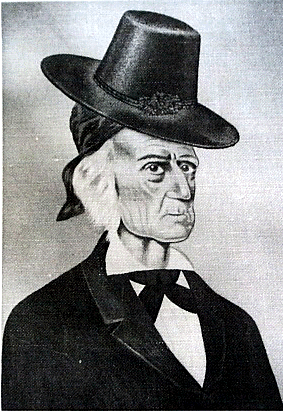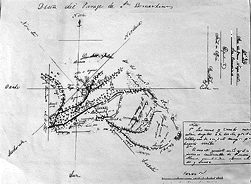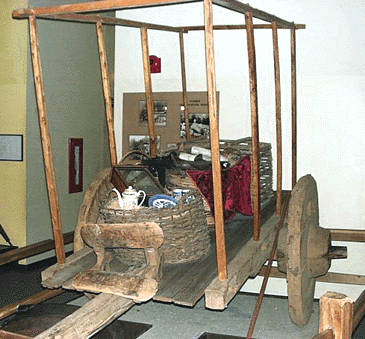

Mexico was finally free of Spain. But as soon as it was free, Americans began to show up in California.
Mexico knew it wanted to keep California. One way to do that was to get settlers on the land. The plan was to spread the people out on ranches, to cover the land. People were given or sold as much land as they could handle. The government hoped that this would keep other people out. Especially Americans!
This plan did not work. Mexico would eventually lose California to the United States.
Don Antonio Maria LugoAntonio Lugo was born in California while it was still part of Spain. He became a Mexican after independence. He was a soldier and a judge, and from 1816-1819 he was the mayor of a little town called Los Angeles. In 1810, the same year San Bernardino was named, Antonio Lugo was given a huge ranch around what is now Compton. That is near Los Angeles. He raised thousands of cattle and three sons. |
 Don Antonio Maria LugoFrom the archives of the A.K. Smiley Library, Redlands, California |
For Sale: One Big ValleyThe Spanish missionaries had been forced out of the estancia and other Missions. Don Lugo became interested in the San Bernardino valley. The Mexican government wanted to have people here to protect the land, so they sold the whole valley to Don Lugo. He bought most of what we know as...
|
Go to the Map Room to see this map bigger! A hand-drawn map of the Lugo Rancho San Bernardino. Loma Linda would be about center bottom, just west of the community marked "San Bernardino." When the Lugos talked about San Bernardino, they meant the homes by the original mission estancia. It would be at about the corner of Mt. View and Mission Road.From the Archives of the A.K. Smiley Library, Redlands, California |
California CashYes, eight-hundred dollars. But he didn't pay by check or cash. The currency or money of California then was cattle hides. The skins of cows were dried and shipped around the world. People used the skins to make leather. Leather was used to make clothes and shoes, and for the belts that were running the machines in mills and factories. People could buy anything with cattle hides. Think of them as big pieces of plywood. They were about the same size, weight and hardness. They also stunk. Later they would be softened and "tanned" to use as leather. |
This oxcart is called a "caretta". It was used to haul cattle hides to the port of Los Angeles to be taken to other countries. You can see it at the County Museum. San Bernardino County Museum |